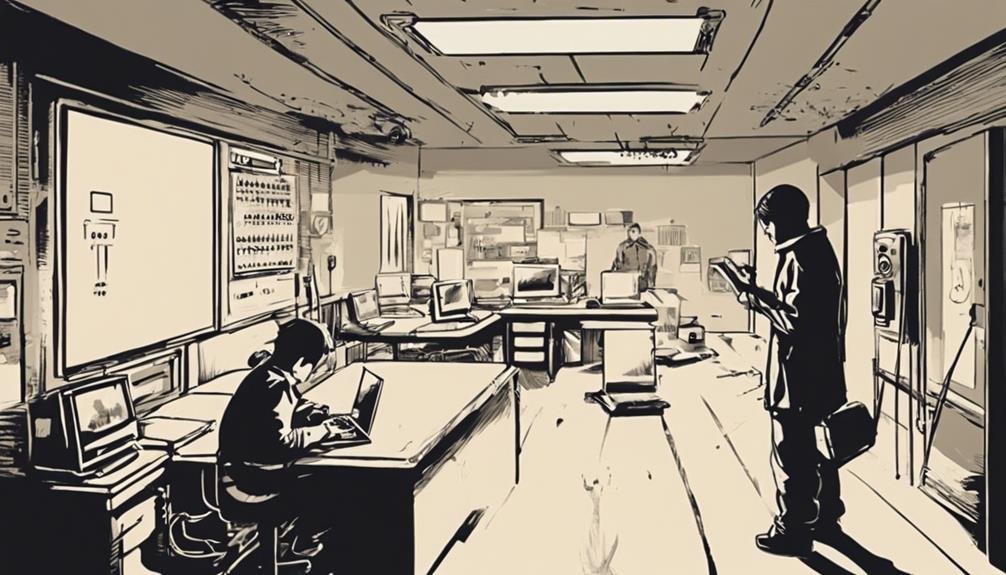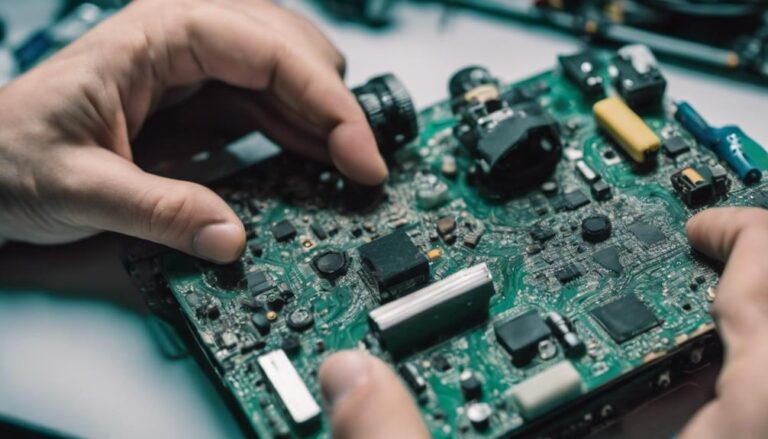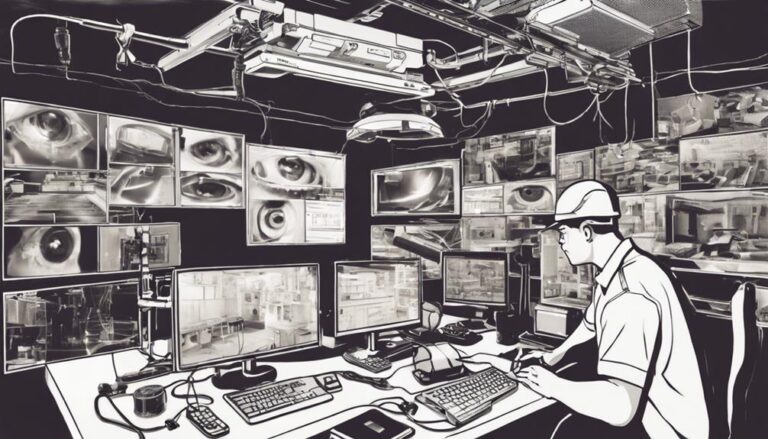To detect a CCTV camera jammer, watch for signs like unusual footage gaps or increased static interference. These can indicate signal disruption. Utilize a signal strength analyzer to measure drops in signal strength or employ handheld frequency scanners for quick checks. Regularly monitor your camera feeds and keep your system updated to enhance security. Troubleshoot any issues by inspecting connections and utilizing jammer detection methods. By staying vigilant and keeping informed on potential threats, you can maintain a more secure surveillance environment. Understanding these detection techniques is essential for effective security management and preventing future interference.
Understanding CCTV Camera Jammers
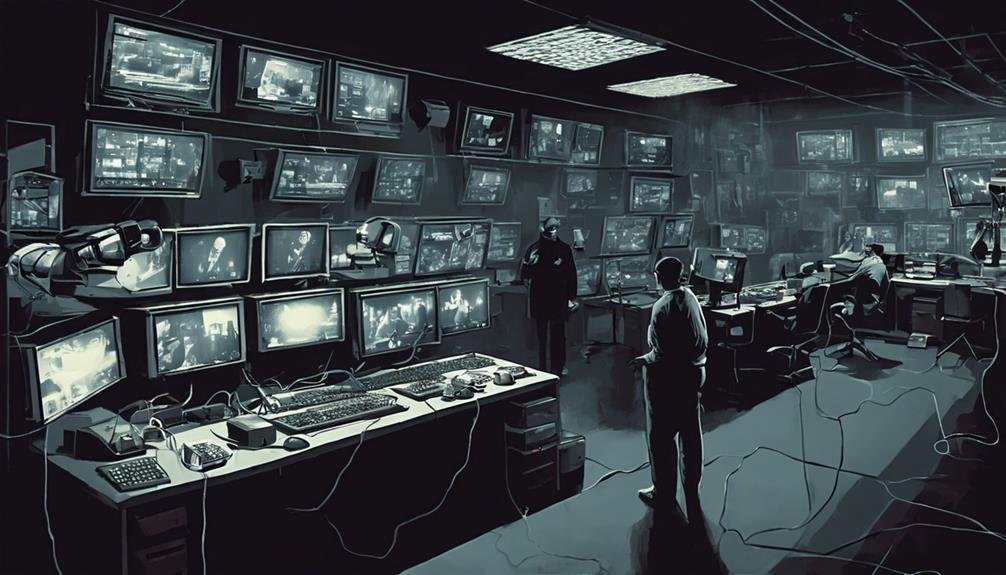
CCTV camera jammers are often used to disrupt the signal between cameras and their recording devices, making them an important concern for security systems. These devices employ jamming technology to emit radio frequency signals that interfere with the communication between CCTV cameras and their associated monitors or storage units. As a result, any footage captured during the jamming period may become inaccessible, undermining the very purpose of surveillance.
The security implications of these jammers are significant. When you rely on CCTV for protection, knowing that such devices can easily disable your system raises concerns about your safety and privacy. Criminals may exploit this vulnerability to carry out illicit activities, as the absence of a recording can provide them with a false sense of security.
Understanding how jamming technology works can empower you to take preventive measures. You might consider alternative solutions, such as using systems that offer encryption or redundancy, to mitigate the risks associated with potential jamming. By staying informed about these threats, you can better safeguard your property and maintain the integrity of your security systems.
Signs of Signal Interference
When monitoring your CCTV system, be alert for unusual footage gaps that could indicate signal interference. You might also notice an increase in static or distortion, which can further suggest that a jammer is at play. Recognizing these signs is essential for maintaining the integrity of your surveillance setup.
Unusual Footage Gaps
Detecting unusual footage gaps can be vital for identifying potential signal interference from a jammer. When reviewing your CCTV recordings, pay close attention to any recording anomalies that may indicate tampering. If you notice sudden breaks or lapses in the footage, it could signal that a jammer is at work. These footage irregularities can compromise the integrity of your surveillance system, leaving you vulnerable.
Look for patterns in the gaps. If they consistently occur at certain times or during specific events, this can further suggest deliberate interference. It's also important to examine the duration of these gaps; brief interruptions might be due to technical issues, while prolonged absences are more indicative of intentional jamming.
Additionally, cross-reference the footage with other sources, like eyewitness accounts or other cameras, to validate what you've captured. Should you discover these unusual footage gaps, consider enhancing your security measures. Upgrading to a more advanced CCTV system or integrating anti-jamming technology can help restore your surveillance effectiveness and guarantee your freedom from potential threats. Always remain vigilant and proactive in safeguarding your environment against such disruptions.
Increased Static Interference
Frequent occurrences of static interference can be a clear indicator of signal disruption, often caused by a jammer. If you notice an increase in static on your CCTV feed, it is vital to investigate further. Static sources can include electronic devices nearby, but when you observe consistent patterns of interference, it often signifies intentional disruption.
Pay attention to the interference patterns that emerge during specific times or when certain actions occur. For example, if static spikes when someone approaches the camera, it could be an indication that a jammer is in use. Interference can manifest as flickering images, a complete loss of video, or a persistent buzzing sound, which all suggest that your camera's signal is being compromised.
To assess the situation, check for any new electronic devices in proximity that could be causing interference. If you determine that external static sources aren't the issue, consider the likelihood of a jammer. In this case, taking action to safeguard your surveillance system becomes vital for maintaining both security and your freedom from unwanted disruptions.
Tools for Detection
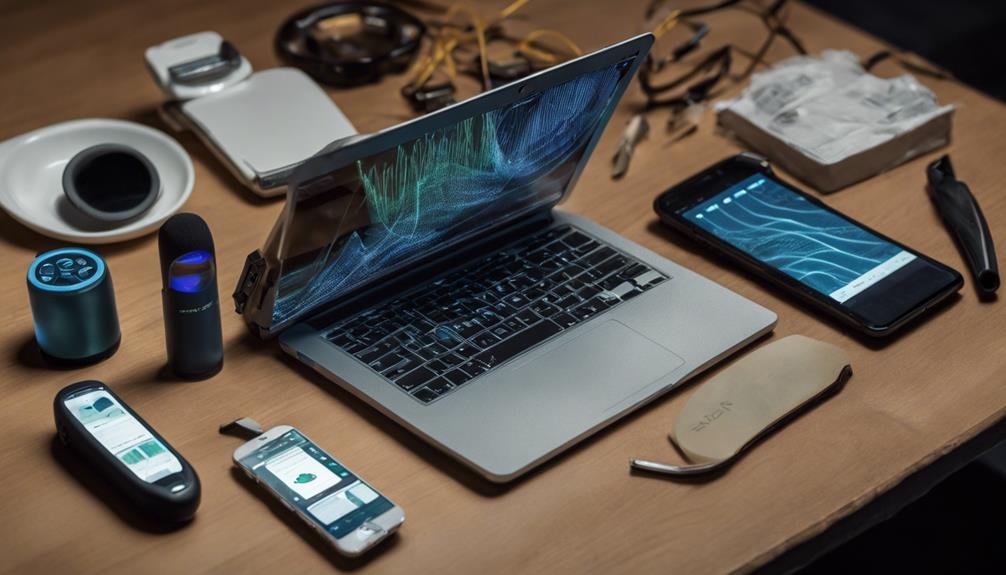
To effectively detect a CCTV camera jammer, you'll need specialized tools like a signal strength analyzer and frequency scanner. These devices help you assess the integrity of your camera's signal and identify any unusual frequency activity. By utilizing these tools, you'll gain a clearer understanding of potential interference and take appropriate action.
Signal Strength Analyzer
When monitoring the integrity of your CCTV system, utilizing a signal strength analyzer can be invaluable. This tool helps you perform precise signal analysis, allowing you to detect potential jamming devices. It measures the strength of the signal being received by your cameras, giving you clear insights into any anomalies that may indicate interference.
Regular equipment calibration is essential to guarantee accurate readings. Without proper calibration, you might overlook subtle disruptions caused by jammers. Here's a quick reference table to help you understand the key functions of a signal strength analyzer:
| Function | Description |
|---|---|
| Signal Measurement | Analyzes the strength of received signals |
| Interference Detection | Identifies unusual drops in signal strength |
| Frequency Range | Measures across multiple frequency bands |
| Calibration Status | Indicates if the equipment is properly calibrated |
| Data Logging | Records signal strength over time for analysis |
Frequency Scanner Tools
Frequency scanner tools play an essential role in detecting potential jamming devices that can disrupt your CCTV system. By identifying unusual frequency ranges, you can protect your surveillance setup from interference. Various scanner types are available, each tailored to specific detection needs and frequencies.
Here are some key types of frequency scanners you might consider:
- Handheld Scanners: Portable and easy to use, ideal for quick checks in the field.
- Spectrum Analyzers: Provide detailed analysis of frequency ranges, enabling precise identification of anomalies.
- Software-Based Scanners: Run on your computer, offering advanced features for in-depth analysis and logging.
- RF Detectors: Specifically designed to detect radio frequency signals, useful for pinpointing jamming devices.
When selecting a frequency scanner, make certain it covers the relevant frequency ranges for your CCTV system. Regularly monitoring these frequencies can help you spot potential threats early, maintaining the integrity of your surveillance operations. Remember, staying vigilant with the right tools empowers you to preserve your freedom and security.
Monitoring Your CCTV System
Monitoring your CCTV system is essential for ensuring its effectiveness and reliability. Regularly check your camera feeds and recording quality to confirm everything's functioning as it should. You should also implement CCTV maintenance tips, such as cleaning the lenses and checking connections to prevent any obstructions that could compromise video clarity.
Ensure your system's firmware and software are up-to-date, as security system upgrades often include patches for vulnerabilities that could be exploited. Utilize motion detection settings wisely, so you're alerted to any unusual activity without unnecessary notifications.
Consider setting up remote access to your CCTV footage, allowing you to monitor your system from anywhere. This flexibility empowers you to respond swiftly to potential security threats.
Additionally, keep an eye on the physical integrity of your cameras and cables. Frequent inspections can help you spot signs of tampering or wear and tear. Remember, a proactive approach to monitoring not only enhances security but also contributes to your overall peace of mind. Embrace these practices to maintain a robust surveillance system that stands guard over your property.
Troubleshooting Common Issues

Troubleshooting common issues with your CCTV system is essential for maintaining ideal functionality. If you notice any anomalies, it's important to act quickly. Here are some effective troubleshooting techniques you can use to identify and resolve issues:
- Check power supply connections to verify everything is plugged in properly.
- Inspect camera lenses for obstructions, dirt, or damage.
- Test your network to confirm that it's operational and not causing any disruptions.
- Employ jammer detection methods to determine if interference is affecting your system.
When you suspect a jammer is in play, you might find it helpful to monitor signal strength and analyze your recordings for unusual gaps. It's also wise to consult your user manual for specific troubleshooting steps tailored to your model. By actively engaging in these practices, you can not only identify problems but also take the necessary steps to restore your system's functionality. Remember, a well-maintained CCTV system is your best defense against unwanted intrusions and guarantees your peace of mind. Stay vigilant, and keep your surveillance system running smoothly.
Preventive Measures Against Jammers
Taking proactive steps can greatly enhance your CCTV system's resilience against jammers. One effective approach is to implement jamming prevention techniques, such as using frequency-hopping spread spectrum technology. This method shifts the frequency of your signal, making it more challenging for jammers to disrupt it.
You should also consider security system enhancements like utilizing wired connections where feasible. Wired systems are inherently less susceptible to jamming compared to wireless options. If wireless is necessary, make sure your devices support advanced encryption protocols to safeguard against unauthorized interference.
Regularly updating your security software is essential, as manufacturers often release patches that address potential vulnerabilities. Additionally, integrating motion detection systems can help you identify unusual activity that may indicate jamming attempts.
Lastly, stay informed about the latest jamming devices and techniques. Being aware of emerging threats allows you to adapt your security measures accordingly. By taking these steps, you'll not only protect your CCTV system but also maintain your right to privacy and safety. Remember, a resilient security setup is a critical component of your freedom to operate without undue interference.
Frequently Asked Questions
Can I Legally Use a Device to Detect Jammers?
You can legally use a device for jammer detection, but be mindful of legal implications in your jurisdiction. Make certain your methods comply with local regulations to avoid potential legal issues while protecting your privacy and freedom.
What Are the Penalties for Using a CCTV Camera Jammer?
Using a CCTV jammer's like playing with fire; you risk getting burned. Legal repercussions can include hefty fines or even jail time, as device restrictions make such actions illegal. Stay informed, stay free, and avoid trouble.
Are There Specific Brands Known for Better Jamming?
While specific brands of jammer technology exist, their jamming effectiveness varies widely. It's essential to know that using such devices is illegal and could lead to serious legal consequences, infringing upon others' rights to privacy.
How Far Can a Jammer Interfere With My CCTV System?
Imagine your security system flickering out. A jammer's range can vary, typically interfering within a distance of 30 to 100 meters. Understanding this interference distance helps you safeguard your CCTV against potential disruptions.
Can Jammers Affect Other Electronic Devices in My Home?
Yes, jammers can affect other electronic devices in your home by using jamming technology, causing signal interference. This disruption can impact anything relying on wireless signals, including Wi-Fi networks and Bluetooth devices, compromising your digital freedom.
